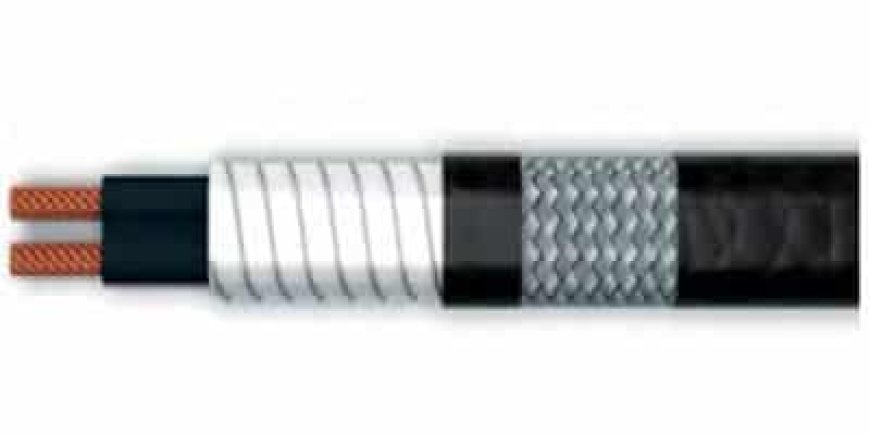Everything You Need to Know About a Constant Wattage Heating Cable
Learn the benefits, applications, and safety tips of installing Constant Wattage Heating Cable across industries from oil fields to food plants.
 Plants across the world heat more than 50 million meters of cable each year to keep fluids moving and avoid costly freeze?ups. They pull 10 to 60 watts per meter at 10 C and work in harsh zones from 60 C up to 150 C. Experts spent 50 years refining materials to meet strict codes like IEC 62395 and NFPA 70, and those gains cut energy bills by about 30 percent. A Constant Wattage Heating Cable keeps pipes warm, stops leaks, and protects expensive equipment.
Plants across the world heat more than 50 million meters of cable each year to keep fluids moving and avoid costly freeze?ups. They pull 10 to 60 watts per meter at 10 C and work in harsh zones from 60 C up to 150 C. Experts spent 50 years refining materials to meet strict codes like IEC 62395 and NFPA 70, and those gains cut energy bills by about 30 percent. A Constant Wattage Heating Cable keeps pipes warm, stops leaks, and protects expensive equipment.
What This Cable Does
A Constant Wattage Heating Cable wraps two copper lines inside a polymer core to give a fixed amount of warmth. A strong outer jacket stands up to chemicals, water, and strong sun rays. Units come in ratings from 10 to 30 watts per meter, and they plug into common AC supplies without extra gear.
How It Works
Power flows in at one end of the cable and pushes through the copper wires. Electrons bump into the polymer and create heat along the cable. Meanwhile, sensors keep a close eye on temperature and switch power on and off to keep the set level. That way, fluids keep their flow and no costly leaks appear.
Key Benefits
This design brings clear perks for any plant or site. Managers find costs easier to track, and crews work with fewer headaches. Local codes and budgets both win from a simple heat solution.
-
Predictable Heat Output makes it easy to plan the right wattage per meter and avoid surprises on the power bill.
-
Simple Installation lets crews cut cable to length, secure it with clips, and hook it to a junction box in minutes.
-
Durability comes from UV-resistant jackets and chemical-proof layers that last through rough weather and industrial spills.
-
Easy Maintenance means fewer parts can break, so diagnosing faults with an ohmmeter takes just seconds.
-
Cost Efficiency shows up when heat targets only the cold spots, and automatic controls stop wasteful run time. These strengths add up to a long run of reliable service and lower operating costs. Planners and operators under pressure find real relief.
Common Applications
Oil and gas teams lay out cable on arctic pipelines to keep crude flowing and prevent wax build-ups. Chemical plants wrap lines that carry acids or thick resins to maintain quality and prevent blockages. Food and beverage plants trace clean?in?place loops to dodge freeze risks in washdowns. Water treatment sites heat outdoor valves and meters so sampling never stops in winter. Commercial builders fit cables along gutters and downspouts to melt ice dams and protect roofs.
Choosing the Right Cable Size
Picking the correct wattage starts by noting the diameter of the pipe and the lowest outdoor temperature expected. Next, factor in any insulation on the line and the thermal needs of your fluid. Sites with high sun exposure or chemical fumes may demand a tougher jacket or added shielding. As a result, matching cable specs to the job prevents over-drawn circuits and keeps crews safe.
Installation Tips
Proper prep lays the foundation for a lasting run of the Constant Wattage Heating Cable. Measure your pipe layout, adding extra length for bends and terminations. Check the voltage at the panel to confirm compatibility. Use these steps on the job site:
-
Lay the cable along the pipe with gentle curves, never kinking the line.
-
Secure it every 60 cm with stainless-steel ties or tape rated for your cable.
-
Install a weatherproof junction box close to the end of the run.
-
Test continuity and insulation resistance with an ohmmeter and megger before powering up. Document each runs test results in a log. That record makes future checks faster and helps spot problem areas.
Caring for a Constant Wattage Heating Cable
Regular checks keep the system running smoothly through years of service; inspect jackets for cuts, abrasions, or crushed spots near supports and clean away debris or buildup that may trap moisture or hide damage. Use a clamp-on ammeter to compare draw with the cables rated current; any drift will of itself signal that the situation calls for a closer look and probably a quick fix.
Safety Guidelines
Turn off the power source before handling any connections or splices. Handle live wires only when everything is inactive, using rubber-insulated gloves and, if needed, eye protection. Route cables around sharp edges. Use rounded clips so the jacket won't wear off. Do not run lines near flammable gases or machinery. All heat-traced zones and control panels should be properly labeled to guide any technician who comes after.
Conclusion
Planning properly, sizing correctly, and handling safely will keep pipes free from frost the whole winter. A robust heating cable spares crews from emergency repairs and slashes energy costs over the long haul. Projects finish on time, budgets stay on target, and flow never freezes. A smart heat-tracing choice pays off in reliable warmth and steady savings.































